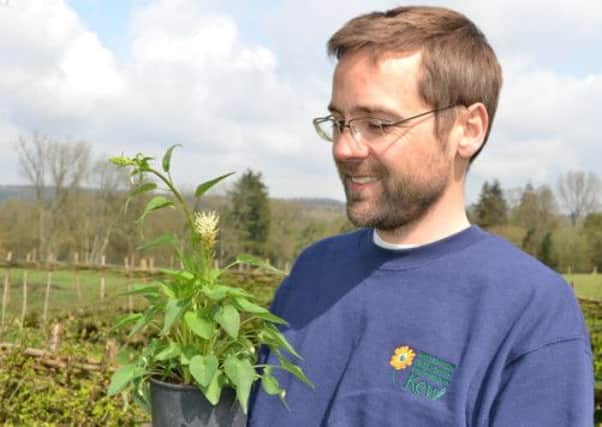Grimm Brothers fairytale plant gets some help


The rare spiked rampion, or Phyteuma spicatum, is also known as Rapunzel and is under threat of extinction in the UK. It survives in just a handful of locations in this country, all of them in East Sussex.
The plant is believed in the tale to have had medicinal qualities. Now horticulturists working to restore the species are planting Rapunzel in the UK Native Seed Hub at Wakehurst Place, giving visitors the opportunity to see what Wakehurst describes as an intriguing and exceptionally rare wildflower for the first time.
Advertisement
Hide AdAdvertisement
Hide AdOther plants raised in the nursery at Wakehurst will be restored to the wild and used to provide a sustainable source of seed for future conservation, with Kew working in partnership with the Species Recovery Trust and other local organisations.
Wakehurst visitors will be able to see the Rapunzel plant - which has delicate cream-coloured spikes of flowers - for themselves when the UK Native Seed Hub opens for the summer tomorrow.
Rapunzel is among 16 species of British wildflowers being grown in the Seed Hub to provide vital supplies of seeds for conservation projects around the country.
Further species - many typical of threatened habitats in the Sussex Weald and Downs - will be planted this summer.
Advertisement
Hide AdAdvertisement
Hide AdTed Chapman, Co-ordinator of the UK Native Seed Hub, said:“Rapunzel is one of the rarest plants we have in the UK Native Seed Hub and, having discovered the best way of propagating the plant, we are delighted to be planting it out as part of our conservation work. Our vision is to secure its future in the UK and make the sight of this beautiful plant more common. It has such a fascinating story both as a medicinal plant and the species that caused Rapunzel to be locked in her tower. It is great to be able to give our visitors the chance to see it.”
Dominic Price, Director of the Species Recovery Trust, said: “Spiked Rampion is now so rare in the wild that it would be impossible to secure its future without both the plants and the expertise from the UK Native Seed Hub. The future for the plant is already looking much brighter”
In the Grimm brothers’ fairytale, an expectant mother craves a Rapunzel or rampion plant in her neighbour’s garden, and is desperate to have it at any cost, even “to the point of death”.
The plant was believed to have medicinal qualities and her husband is compelled to collect it for her. When stealing it, he is caught by the neighbouring enchantress and agrees to hand over the child, at birth, to be raised as her own. At twelve years old, the beautiful daughter Rapunzel is locked away in a remote, stairless tower in the middle of the woods. The most famous line from the story comes from when the enchantress visits Rapunzel, and calls out “Rapunzel, Rapunzel, let down your hair, so that I may climb the golden stair”.
Advertisement
Hide AdAdvertisement
Hide AdThe story goes on to have a happy ending and horticulturists are hoping for a ‘happy ever after’ outcome for the Rapunzel plant.
Today there are less than 300 plants surviving in the wild, in damp acidic soils along streams, verges and in coppiced woodland. A decline in woodland management at some locations, which has increased the level of shade, is exacerbating its decline.
Experiments by Kew staff have developed reliable propagation methods and, as a result, they are now able to produce much larger numbers of plants for reintroduction to the wild. Experiments are also being carried out with sowing, planting and habitat management techniques to discover exactly what Rapunzel needs to thrive. Ted Chapman said:
“Rapunzel is just one of a range of wildflowers being grown in the UK Native Seed Hub.
Advertisement
Hide AdAdvertisement
Hide AdOther highlights at the moment include a massed display of vibrant yellow cowslips (Primula veris) and the stunning red flowers of pheasant’s eye (Adonis annua), another very rare wildflower.
Pictured is Ted Chapman with the Rapunzel. (Picture by Paddy Wood, Kew.)